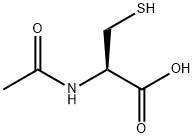Various Uses of N-Acetyl Cysteine
Oct 25,2019
N-acetyl cysteine (NAC), as a nutritional supplement, is a greatly applied antioxidant in vivo and in vitro. N-Acetyl Cysteine is a precursor of L-cysteine that results in glutathione elevation biosynthesis. It acts directly as a scavenger of free radicals, especially oxygen radicals. N-Acetyl Cysteine is a powerful antioxidant. It is also recommended as a potential treatment option for different disorders resulted from generation of free oxygen radicals. Additionally, it is a protected and endured mucolytic drug that mellows tenacious mucous discharges. It has been used for treatment of various diseases in a direct action or in a combination with some other medications. This paper presents a review on various applications of N-Acetyl Cysteine in treatment of several diseases.
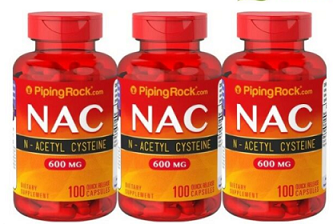
Introduction
N-acetyl cysteine (NAC), as a safe and inexpensive medication, is commercially accessible since long-time ago (1). This drug is not found in natural sources, although cysteine is present in some meals like chicken and turkey meats, garlic, yogurt, and eggs (2). N-Acetyl Cysteine is a well-tolerated mucolytic drug that moderates clinging mucous secretions and enhances glutathione S-transferase activity. During oral administration, deacetylation reaction of N-Acetyl Cysteine happens while passing along the small intestine as well as liver, thus its bioavailability is decreased to 4-10%. NAC stimulates glutathione biosynthesis, promotes detoxification, and acts directly as a scavenger of free radicals. It is a powerful antioxidant and a potential treatment option for diseases characterized by the generation of free oxygen radicals (3). Studies have shown no maternal or fetal harmful effects of NAC treatment. This nutritional supplement is an excellent source of sulphydryl groups. N-Acetyl Cysteine prevents apoptosis and oxygen related genotoxicity in endothelial cells by increasing intracellular levels of glutathione and decreasing mitochondrial membrane depolarization (4). The critical antioxidant power of NAC is due to its role as a precursor of glutathione, which is one of the most important naturally occurring antioxidants (5). N-Acetyl Cysteine combination with vitamin E, or vitamins A+E, as well as essential fatty acids considerably reduce reactive oxygen species (ROS), leading to pregnancy rate improvement (6). Studies have indicated that preserving impact of NAC against the toxicity of chemicals is due to its dual role as a nucleophile and as a -SH donor (7). In this study by reviewing literatures, various applications of NAC in treatment of some diseases are highlighted.
Polycystic ovary syndrome
Polycystic ovary syndrome (PCOS) is one of the most common endocrine glands-related diseases affecting 5-10% of reproductive-age women (8). This syndrome is considered as the most common cause of anovulatory infertility. PCOS is also associated with pregnancy complications such as recurrent pregnancy loss (RPL). Different studies report the prevalence of PCOS in women with a history of RPL in a wide range of 10-82%. Findings show that 70.7% of PCOS women with a previous RPL had thrombophilic disorders. In addition, prevalence of protein C deficiency is significantly higher in PCOS patients compared to the non-PCOS women (9).
The results of a study showed that women with PCOS have a high prevalence of metabolic syndrome and its individual components (obesity, hypertension, glucose intolerance and triglycerides), particularly decreased high density lipoprotein cholesterol (10). In another study, women and their relatives with PCOS had an increased prevalence of diabetes commonly in mother’s side of the family (11).
As the first medication option, clomiphene citrate (CC) is applied for the induction of ovulation in PCOS women. A collection of published results for treatment with CC showed a pregnancy rate and a miscarriage rate of 36 and 20.4%, respectively. One of the frequently determined problems of this treatment is resistance to CC in up to 40% of PCOS patients. N-Acetyl Cysteine is a mucolytic drug with insulin-sensitizing properties that has been used successfully as a supporting therapy in subjects with CC-resistant PCOS (8). Recent studies have shown that a combination of CC and NAC considerably increased both ovulation and pregnancy rates in women with CC-resistant PCOS. NAC has multiple biological effects, two of which are potentially and directly related to pregnancy rate improvement. N-Acetyl Cysteine has mucolytic action, thus it can revoke the negative effect of CC on cervical mucus. Simultaneously, it has insulin sensitizing effect that could assist in issues related to PCOS. The negative influence of CC on cervical mucus can create a "hostile" environment for conception (1).
Researchers evaluated the effect of NAC, known to resupply stores of the antioxidant glutathione, on insulin secretion and peripheral insulin resistance in subjects in association with PCOS. Moreover, treatment of hyperinsulinemic patients by NAC was found to tailor control parameters of glucose in them and consequently, their insulin levels and peripheral insulin sensitivity were reduced and increased, respectively. Therefore, the antioxidant effects of N-Acetyl Cysteine may act as a therapeutic approach to improve the level of circulating insulin as well as insulin sensitivity in PCOS patients with hyperinsulinemia (12).
Premature birth and recurrent pregnancy loss
Premature birth is the most common reason of perinatal mortality and long-term unhealthiness in low-income countries (13). Inflammation, fetal infection, and previous preterm delivery are significant risk factors for preterm birth and neonatal brain injury (14). Rising infection with bacterial vaginosis during pregnancy is related to a risk factor for preterm delivery and low birth weight. Antimicrobial medical care is, although, not adequate for the prevention of preterm birth and the inflammatory as well as anti-inflammatory responses could make problem complex (3). NAC by having an anti-inflammatory outcome can affect human term and preterm labors. N-Acetyl Cysteine restrains the inflammatory response with no respect whether infection is started before or after treatment initiation with the drug. Shahin et al. (3) concluded that in women with previous preterm birth and bacterial vaginosis, 0.6 g of NAC daily can be taken orally along with progesterone after week 16 of pregnancy to protect against preterm birth recurrence and improve neonatal outcome.
Administration of N-acetyl cysteine for infertile patients undergoing assisted reproductive
techniques Elgindy et al. (5) found that 1200 mg NAC (daily) supplementation, started with administration of human menopausal gonadotrophin till the day of human chorionic gonadotrophin, did not significantly increase pregnancy rate in intracytoplasmic sperm injection (ICSI) cycles using the long agonist protocol. N-Acetyl Cysteine treatment was associated with insignificant decrease in granulosa cell apoptosis, as well as insignificant increase in fertilization rate and grade-one embryo formation. Larger-scale studies, possibly with higher doses and/or longer duration of NAC administration, should be performed to identify any significant effects. In addition, Cheraghi et al. (26) conducted a study to determine the effect of co-administration of NAC and metformin on ovulation induction in PCOS patients with ICSI cycle. They detected that co-administration of these two components has no benefit for ovulation induction in PCOS patients with ICSI cycle. In another study, Rizk et al. (27) investigated the effect of NAC on performance of CC in ovulation induction. They concluded that the combination of NAC with CC is an effective way for ovulation induction in young women undergoing ICSI cycles.
Asthma
Asthma is a chronic disorder associated with inflammation and immune cell infiltration of airways (43). Airway hyper-responsiveness (AHR) can be originated from consistent presence of inflammatory mediators and immune cells in airways. AHR is clinically determined with breathlessness, coughing and wheezing symptoms (44). Studies showed the preventive effect of NAC antioxidant on the AHR and steroid resistant accumulation of inflammatory cells in the airways of the animal model with acute exacerbation of asthma (45,47).
Alzheimer
Alzheimer disease (AD) is known as a multifactorial disease with many abnormalities in physiological, biochemical, and neurochemical point of view. Aging is the major risk factor for AD that coexists with other causes of cognitive decline, particularly vascular dementia (48). Some factors, such as mitochondrial dysfunction, abnormal protein aggregation, metal accumulation, inflammation and excitotoxicity play important roles in AD pathology. Although the relationship between these factors and development of AD is multidirectional, oxidative damage is considered as a common thread linking some of these factors (49). Results of different studies showed that lipoic acid (LA) and NAC decreased levels of oxidative and apoptotic markers via protection of mitochondrial function (50,53). Combination of both LA and NAC maximizes this protective effect suggesting that this may prevent mitochondrial decay associated with aging and age-related disorders such as AD. Antioxidant therapies based on LA and NAC seem promising since they can act on mitochondria, one key source of oxidative stress in aging and neurodegeneration (50).
Conclusion
A review on NAC literature shows that this agent is a safe and well-tolerated supplementary drug without any considerable side effects. It 16 is as an antioxidant with a free radical scavenger property, as important characteristic of this medical supplement. It has been used as a beneficial drug treatment for some disorders such as poly cystic ovary syndrome patients with CC resistance, preterm birth, acetaminophen toxicity, RPL, chronic bronchitis, ulcerative colitis, liver cancer, muscle performance, hemodialysis, asthma, Alzheimer and Parkinson. Although in some cases, such as improving pregnancy rate in ICSI cycles, N-Acetyl Cysteine action is still unclear and further investigations are necessary.
Acknowledgments
The authors would like to thank Royan Institute experts for their helpful comments and suggestions. There is no conflict of interest in this study.
References
1. Youssef G, Meguid Ali A, Alaa N, Makin B, Waly M, AbouSetta A. N-acetyl-cysteine in anovulatory women: the impact of postcoital test. Middle East Fertil Soc J. 2006;11:109–112. [Google Scholar]
2. Larsson SC, Håkansson N, Wolk A. Dietary cysteine and other amino acids and stroke incidence in women. Stroke. 2015;46(4):922–926. [PubMed] [Google Scholar]
3. Shahin AY, Hassanin IM, Ismail AM, Kruessel JS, Hirchenhain J. Effect of oral N-acetyl cysteine on recurrent preterm labor following treatment for bacterial vaginosis. Int J Gynaecol Obstet. 2009;104(1):44–48. [PubMed] [Google Scholar]
4. Amin AF, Shaaban OM, Bediawy MA. N-acetyl cysteine for treatment of recurrent unexplained pregnancy loss. Reprod Biomed Online. 2008;17(5):722–726. [PubMed] [Google Scholar]
5. Elgindy EA, El-Huseiny AM, Mostafa MI, Gaballah AM, Ahmed TA. N-acetyl cysteine: could it be an effective adjuvant therapy in ICSI cycles?. A preliminary study. Reprod Biomed Online. 2010;20(6):789–796. [PubMed] [Google Scholar]
6. Agarwal A, Allamaneni SSR. Oxidants and antioxidants in human fertility. Middle East Fertil Soc J. 2004;9(3):187–197. [Google Scholar]
7. Wang Q, Hou Y, Yi D, Wang L, Ding B, Chen X, et al. Protective effects of N-acetyl cysteine on acetic acid-induced colitis in a porcine model. BMC Gastroenterol. 2013;13:133–133. [PMC free article] [PubMed] [Google Scholar]
8. Nasr A. Effect of N-acetyl cysteine after ovarian drilling in clomiphene citrate-resistant PCOS women: a pilot study. Reprod Biomed Online. 2010;20(3):403–409. [PubMed] [Google Scholar]
9. Moini A, Tadayon SH, Tehranian A, Mohammadi Yeganeh L, Akhoond MR, Salman Yazdi R. Association of thrombophilia and polycystic ovarian syndrome in women with history of recurrent pregnancy loss. Gynecol Eendocrinol. 2012;28(8):590–593. [PubMed] [Google Scholar]
10. Moini A, Javanmard F, Eslami B, Aletaha N. Prevalence of metabolic syndrome in polycystic ovarian syndrome women in a hospital of Tehran. Iran J Reprod Med. 2012;10(2):127–130. [PMC free article] [PubMed] [Google Scholar]
- Related articles
- Related Qustion
- N-Acetyl-L-cysteine: Uses, Benefits and Side effects Apr 12, 2024
N-Acetyl-L-cysteine (NAC) is a powerful antioxidant. It acts as a direct scavenger of free radicals, especially oxygen radicals.
- Side effects of N-Acetyl-L-cysteine Jan 13, 2022
N-Acetyl-L-cysteine (NAC) is a white crystalline powder that melts in the range of 104–110°C and has a very slight odor. It is a natural sulfur-containing compound that is produced in living organisms from the amino acid cysteine. It is inv
- Top 9 Benefits of NAC (N-Acetyl Cysteine) Oct 25, 2019
For people with bipolar disease and depression, N-Acetyl-L-cysteine may help decrease symptoms and improve your overall ability to function. What’s more, research suggests that it may play a role in treating moderate to severe OCD.
For people with bipolar disease and depression, N-Acetyl-L-cysteine may help decrease symptoms and improve your overall ability to function. What’s more, research suggests that it may play a role in treating moderate to severe OCD.....
Oct 25,2019Biochemical EngineeringL-Glucose naturally occurs in fruits and other parts of plants in its free state. However, it is not present in higher living organisms.....
Oct 25,2019SaccharidesN-Acetyl-L-cysteine
616-91-1You may like
- The benefits of Copper tripeptide
Apr 22, 2024
- Triphosphopyridine nucleotide: Introduction and Uses
Apr 18, 2024
- Is arbutin safe to use every day?
Apr 18, 2024
N-Acetyl-L-cysteine manufacturers
- AC-L-Cys-OH
-
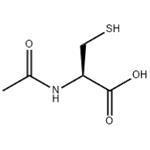
- $0.00/ kg
- 2024-04-26
- CAS:616-91-1
- Min. Order: 1kg
- Purity: 98%
- Supply Ability: 1T+
- Acetylcysteine(N-acetylcysteine)
-
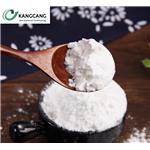
- $9.00 / 10g
- 2024-04-26
- CAS:616-91-1
- Min. Order: 10g
- Purity: 99%
- Supply Ability: 10 tons
- N-Acetyl-L-cysteine
-
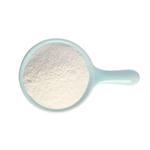
- $44.00 / 10kilograms
- 2024-04-26
- CAS:616-91-1
- Min. Order: 10kilograms
- Purity: 99%
- Supply Ability: 100tons




